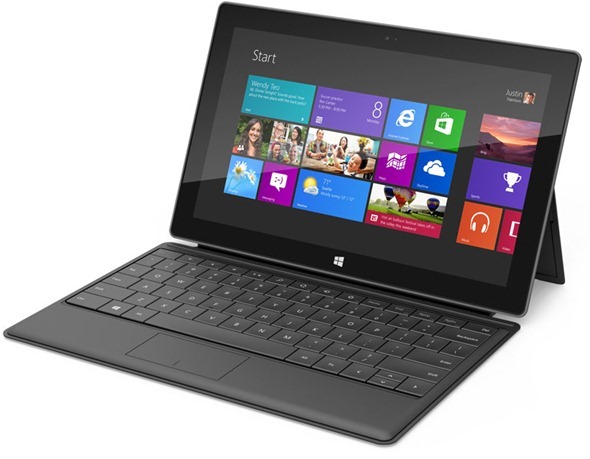When Microsoft first inducted itself into the tablet market by announcing the Surface earlier this year, many were torn about which configuration they’d be going for. The Redmond company revealed the Surface RT – powered by an ARM processor – would be releasing first along with the big Windows 8 launch, and so has been the case, and while many have already snapped up their Microsoft tablet and are already familiarizing themselves with Windows RT, others have held their ground, waiting for the fully-powered Surface Pro running Windows 8 and powered by Intel’s Ivy Bridge chips.
As many of you will have learned from experience, if you walk into any electronics store and are unsure of what you want, you’re likely to be filled with the same mumbo-jumbo from some ill-informed sales clerk. Half of them won’t even be aware of a second Surface due for release in January, and the other half that have been given the heads-up will simply tell you it’s not worth the wait. It’s the archetypal answer.

Here at Redmond Pie, we don’t want you to buy the wrong device for yourself, and if you’re a little confused as to the differences between the current Microsoft Surface RT and the upcoming Microsoft Surface Pro, we’re here to help. In this post, we’ll be looking at some of the key differences between the two, and by the end, you should have a much more vivid picture of which Surface is right for you.
The Surface RT packs in a low-power ARM chip, which, simply put, is a bit more smartphone than PC. On the one hand, this can be beneficial, as the battery longevity can be enhanced, and ultimately, the price of any device packing ARM will always be a great deal cheaper than one running a "proper" processor from AMD or Intel. The downside, however, is that software compatibility is limited as a result.
If, for example, you have a x86 version of a game or app downloaded for Windows, you won’t be able to run it on your Surface RT. In fact, no full x86 Windows app will work, but only those designed for Windows RT and are available on Windows Store.

The Surface Pro doesn’t suffer from these problems. It runs Windows 8. Not Windows RT – just the full-blown Windows 8 Pro. And you know what that means: legacy apps. You can run any Windows desktop app on your tablet without a hitch, and even though Windows RT may just prove to be popular, Windows 8 will always be more lucrative to developers than the watered-down version. This means apps will arrive quicker, and because it’s more powerful on Intel’s Ivy Bridge, they will run smoother, likely offer more features, and if productivity is one of your main goals, you should be swayed towards the Surface Pro.
So, we’ve established that Pro comes up trumps on compatibility. The Surface RT, to me, is for the general user who is looking for an iPad / Android tab alternative, and will not utilize it for high-end use. It has almost full version of desktop-based Office, but that wont be enough for everyone. The whole idea of the "hybrid" form factor, is that the Surface can be used as a notebook, and while this is the case for the Surface Pro, in the case of the RT, it’s more of a gimmick.
In essence, the $499 tablet is like an iPad alternative, running tailor-made apps and being only fairly useful for productive purposes. But as somebody who works and lives on a smartphone, tablet, and notebook almost permanently, I couldn’t use an iPad in place of a MacBook, and those who buy the Surface RT hoping as much will be greatly disappointed.

Yes, the Surface Pro is expected to cost around $899, will have a slightly thicker form factor than its RT counterpart, may not have as good a battery life, will have fans (some tablet users may not like that), but with good reason. You get, to contextualize, an iPad and a MacBook alternative rolled into one, and the longer Microsoft continues to blur the very great differences between its two tablets, the likelier consumers are to purchase the wrong one. Remember: The iPad 4 with its power, the Galaxy Note 10.1 with its creative capabilities – neither of these are to replace true notebooks – at least, not at the moment. Don’t fall into the trap of thinking because Microsoft offers a novel keyboard attachment to the Surface RT, that it’s your one-stop solution.
If you want an all-in-one, wait for the Pro.
You can follow us on Twitter, add us to your circle on Google+ or like our Facebook page to keep yourself updated on all the latest from Microsoft Google, Apple and the web.

